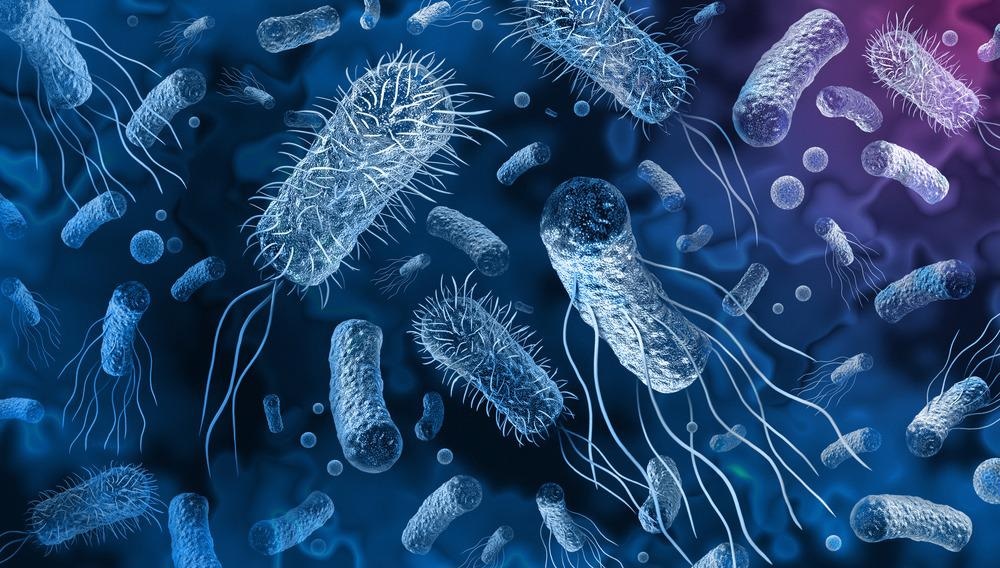As the conventional methods available for monitoring bacterial contaminants in water are expensive and time-consuming, there is an urgent need for a rapid and on-spot detection system. Addressing this need, researchers have recently developed a magnetic nanoparticle-assisted aptamer-quantum dot-based biosensor, which can rapidly identify E. coli in water samples. This study is available as a pre-proof in the Science of the Total Environment journal.

Study: Development of magnetic nanoparticle assisted aptamer-quantum dot based biosensor for the detection of Escherichia coli in water samples. Image Credit: Lightspring/Shutterstock.com
Several diseases occur owing to the contamination of food and water by microorganisms. One of the most common water contaminants is Escherichia coli (E. coli).
Microbial Contamination of Water
Several bacterial and viral diseases occur due to contamination of water bodies; for instance, 60% of diarrheal ailments have been associated with this issue. Water contamination by microbial pathogens has become a global concern as it could act as a source of disease and lead to its transmission. Some of the main causes of contamination of natural water bodies are urbanization, sewage contamination, unchecked industrial effluents, untreated hospital discharges, etc.
Scientists determine the quality of water by monitoring the presence of indicator microorganisms. For human consumption, the levels of E. coli and other coliforms (e.g., Enterobacteriaceae) in water samples are evaluated. Various strains of pathogenic E. coli, such as K-12, O157:H7, and CFT073, can cause urinary tract infections (UTIs), neonatal meningitis, and gastroenteritis. Some other harmful water contaminants, especially contamination with fecal matter, can cause serious diseases, such as hepatitis A, typhoid fever, and viral gastroenteritis.
Researchers have developed sophisticated biosensors with biological selectivity. These biosensors contain a microelectronic circuit and bio-recognition system, which can rapidly detect contamination in water samples. Developing novel biosensors that can rapidly detect E. coli in water samples could solve various water quality-related issues.
Biosensors for Rapid On-the-Spot Detection of E. coli-A New Study
Scientists have developed a fluorescence-based biosensor to identify E. coli based on the principle that 4-methylumbelliferyl-β-D-glucuronide (MUG) is rapidly hydrolyzed by an E. coli enzyme β-D-glucuronidase (GUD). This reaction produces a fluorogenic product, which shows the presence of E. coli in water samples.
Scientists use RNA Output Sensors Activated by Ligand Induction (ROSALIND), a cell-free system, to detect various water contaminants. This system utilizes RNA aptamer, which induces fluorescence. Hence, a contaminant triggers the aptamer to transcribe and produce fluorescent signals.
Researchers have developed E. coli aptamer I & II conjugated superparamagnetic iron oxide nanoparticles (SPIONs) and Cadmium telluride-mercaptopropionic acid quantum dots (CdTe QDs) ATmega328P prototype biosensor for both qualitative and quantitative detection of E. coli in water samples.
Scientists used the dynamic light scattering (DLS) method to measure the size distribution of the newly synthesized hydrophilic CdTe-MPA QDs and hydrophilic SPIONs, dispersed in ultrapure water. The average particle size of hydrophilic CdTe-MPA QDs was reported to be 132.9 nm, and they were found to be negatively charged. TEM images revealed the synthesized CdTe-MPA QDs nanoparticles to be spherical.
In this study, researchers evaluated the magnetic property of the SPIONs, at room temperature, by using a superconducting quantum interference device magnetometer. They observed SPIONs were superparamagnetic and the net magnetization of the particles in the absence of an external field was zero.
The authors bioconjugated the selective aptamers against E. coli which led to the formation of the desired nanoconjugates of aptamer I-CASPIONs and aptamer II-CdTe-MPA QDs. E. coli containing water samples were incubated with E. coli specific aptamer I conjugated CASPIONs, where E.coli got readily attached to the aptamer I on the surface of SPIONs.
Subsequently, these were separated using a high-strength laboratory magnet to form a sludge consisting of the bacteria-SPION complex. The presence of E. coli cells was confirmed with the help of aptamer II–conjugated CdTe-MPA QDs studied under confocal laser scanning microscopy.
The ATmega 328P microcontroller has been used to develop a prototype biosensor based on Aptamer II conjugated CdTe MPA QDs. In this prototype biosensor, the fluorescence intensity readings of CdTe-MPA QDs, before and after excitation by UV light, are obtained on its liquid crystal display (LCD). This biosensor can detect even low bacterial counts (up to 100 CFU) using a photodiode and plano-convex lens. Importantly, the ATmega328P microcontroller permits on-the-spot detection of E.coli in water samples with high specificity and sensitivity.
Conclusion
In this study, researchers reported a successful development of a fluorescence-based ATmega328P prototype biosensor, which can effectively detect the presence of E. coli. SPIONs and CdTe-MPA QDs were conjugated with E. coli specific aptamer I & II.
Both bioconjugation of E. coli specific aptamer I &II with SPIONs as well as QDs were able to detect E. coli. Researchers further used aptamer II conjugated CdTe MPA QDs to capture and detect E.coli with the ATmega328P prototype biosensor, which can detect E.coli on the spot up to 100 CFU in the water sample.
Reference
Pandit, C. et al. (2022) Development of magnetic nanoparticle assisted aptamer-quantum dot based biosensor for the detection of Escherichia coli in water samples. Science of the Total Environment. https://www.sciencedirect.com/science/article/pii/S0048969722019507?via%3Dihub
Disclaimer: The views expressed here are those of the author expressed in their private capacity and do not necessarily represent the views of AZoM.com Limited T/A AZoNetwork the owner and operator of this website. This disclaimer forms part of the Terms and conditions of use of this website.